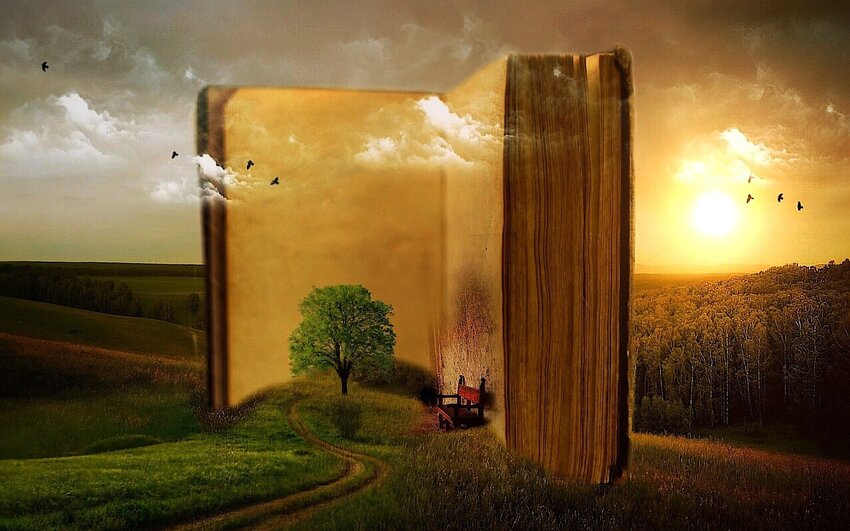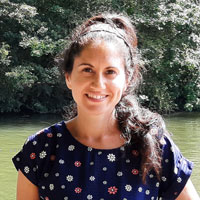There’s a reason why YA fantasy and sci-fi novels are so addictive.
It’s a genre of fiction that contains universal and omnipresent tropes.
Writers shouldn’t be afraid to use tropes because they’re part of the genre—and there’s always room for new ways to use them.
Many online articles will tell you that these tropes are overdone and that you shouldn’t use them in your writing, but the reason they’re so popular is because they work.
The question isn’t really whether you should use tropes in your novel—that’s up to you and the story you want to tell—but how you use them and whether you’re able to bring in a new element or a twist.
In this article, we’ll look at what a trope is versus a cliché, then delve into the top 10 most popular tropes in YA fantasy and sci-fi.
Trope Versus Cliché
Do you know the difference between a trope and a cliché in fiction?
As a general principle, an author is expected to use tropes but should refrain from writing a cliché.
Ouch.
Sounds complicated, right?
Here’s a quick breakdown of the differences between both:
Trope
Tropes are literary devices that evoke well-known themes and messages to young adult readers.
They help create a sense of familiarity that resonates with the audience.
Tropes can be anything from plot devices, character archetypes, and settings, to themes that are often used in specific genres or media.
They aren’t intrinsically good or bad, but rather tools that writers use to invent stories that feel both familiar and new.
Cliché
A cliché is an overused or predictable element that, over time, has lost its originality and impact and become boring to the reader.
Whereas a trope often has a broad connotation, meaning, or scope, a cliché tends to be specific and narrow.
Clichés can be phrases, situations, or character types that have been used so often that they have become uninteresting and stereotypical.
For example, “love at first sight”, when two characters fall in love instantly, without any development or conflict, could be considered a cliché.
Another example would be the sentence, “It was a dark and stormy night.” Or a plot that is explained at the end as being “all a dream.”
See what fits your style and voice and work with a line editor, who can make suggestions about the excessive use of clichés and how to modify them.
To sum up, the key is to use familiar tropes in creative and unexpected ways and try to avoid clichés that have become repetitive and trite.
10 Tropes in YA Fantasy and Sci-Fi
Chosen One
As one of the most beloved tropes of the young adult speculative genre, the chosen one is when a protagonist is predestined to do great things, like saving the world or fulfilling a prophecy.
What they accomplish is due to fate and the (often magical) abilities they possess—and that sets them apart from others—rather than because of their personalities, talent, and hard work.
An interesting variation is where the protagonist’s actions are dictated not by their special abilities, but by a particular skill or training. Or when being a chosen one creates challenges and difficulties.
Examples:
The Raven Cycle by Maggie Stiefvater
Cinder (The Lunar Chronicles, #1) by Marissa Meyer
Aurora Rising (The Aurora Cycle, #1) by Amie Kaufman & Jay Kristoff
Love Triangle
A popular trope in young adult fantasy romance books, the love triangle involves the protagonist being torn between two love interests.
Often, the two love figures represent different romantic options and personalities (for example, one character is sweet and helpful, while the other has a tongue-in-cheek sense of humor or a darker personality).
The protagonist may explore their options with one then the other and isn’t sure of who to be with.
Note: While this trope can lead to a lot of drama, tension, and suspense, it has fallen a bit out of trend.
Examples:
Vampire Diaries series by L.J. Smith
Twilight by Stephenie Meyer
Magical School
The protagonist attends a specialized school or academy where they learn about magic and develop special talents and skills.
Harry Potter comes to mind, and this trope setting is a popular device seen in many young adult and middle-grade fantasy novels.
Note: These days, dark academia has become an increasingly popular option for magical school settings, providing interesting variations to the trope.
Examples:
Harry Potter and the Sorcerer’s Stone by J.K. Rowling (more MG than YA)
A Deadly Education by Naomi Novik (dark academia)
The Atlas Six by Olivie Blake (dark academia)
Hidden Identity
Another common trope is when the main character finds out they don’t know everything about their past or themselves and discovers a hidden identity or lineage.
Their true nature or heritage plays a significant role in the story, helping them solve a conflict and ascend to higher positions and status.
This trope is interesting if it is matched with a strong ‘theme’ (aka lesson learned) so that the story resolution doesn’t just revolve around finding the hidden part of themselves, but also around learning a crucial lesson.
Examples:
Throne of Glass series by Sarah J. Maas
Legendborn by Tracy Deonn
Quest/Journey
The protagonist goes on an adventure, sometimes voluntarily, other times more reluctantly (think, The Hobbit).
They are on a quest to accomplish a specific goal, which often corresponds to the central plot of the story (but it can also be a subplot).
The journey often involves companions, mythical creatures, and overcoming obstacles.
Example:
Percy Jackson & The Olympians series by Rick Riordan (MG)
Good vs. Evil
Another trope that is hard to escape in young adult fantasy literature is the good versus evil one.
Both sides are clearly distinguished, and the protagonist must ally with one side and fight the other side, such as a powerful antagonist or dark force.
A more compelling variant is when the two sides aren’t so distinct, for example when good and bad aren’t obvious, or when the protagonist must discover and deal with darker parts of themselves.
Example:
The School for Good and Evil by Soman Chainani
Prophecy
Ah, the good ol’ prophecy!
This trope never gets tiring to fantasy lovers, and it involves a prediction that foretells the protagonist’s destiny or the fate of the world.
This is a plot device that is often used to drive the narrative, shape the character’s choices, and help explain some otherwise unexplainable things, like a special skill or affinity with magic.
Example:
The Mortal Instruments series by Cassandra Clare
Dystopian Societies
Not just reserved for Sci-Fi novels, dystopian fantasy is a subgenre of speculative fiction, where the protagonist lives in a broken and dysfunctional society.
This popular trope setting amplifies our humanity and society’s problems and allows an exploration of its weaknesses and defects.
It creates a dynamic, fast-paced narrative, where stakes and tension are high.
Examples:
The Hunger Games by Suzanne Collins
The Selection by Kiera Cass
Red Queen by Victoria Aveyard
Divergent by Veronica Roth
Forbidden Love/ Star Crossed
If you’re a fan of fantasy romance novels, then you most likely have encountered this trope, which is common in YA.
The “forbidden love” trope is when everything opposes two protagonists and love isn’t available to them, but they succumb to it regardless.
The two heroes must overcome formidable obstacles to be together, fighting opposing sides and worldviews.
These stories can lead to a lot of drama, conflict, and romantic tension.
Examples:
Zodiac Academy by Caroline Peckham and Susanne Valenti
Vampire Academy by Richelle Mead
Reluctant Royalty/Heir
In this trope, the heir is reluctant to take their responsibility as a royal.
They may have been raised as royalty but want none of it and would rather have been or become a commoner.
Other times, along with the “hidden identity” trope, the plot is about the hero discovering they’re royalty and they struggle with this new knowledge of who they are.
The “reluctant heir” trope can create internal conflict as the protagonist must consider what is good for them versus what their responsibilities are, and how ruling could help change the society for the better.
Example:
The Lunar Chronicles by Marissa Meyer
In conclusion, these popular tropes are just a few of the many tropes present in YA fantasy novels. Authors should try to approach them with a creative eye and a fresh perspective, to prevent them from becoming stale (and clichéd).
You’ll find more specific tropes in this YA Shelf article, although it doesn’t always differentiate between a trope and a cliché.
If you’re not sure how you should be using these tropes in your writing, or if you want to brainstorm ways to make them new and original, don’t hesitate to book a story coaching consultation with me.





